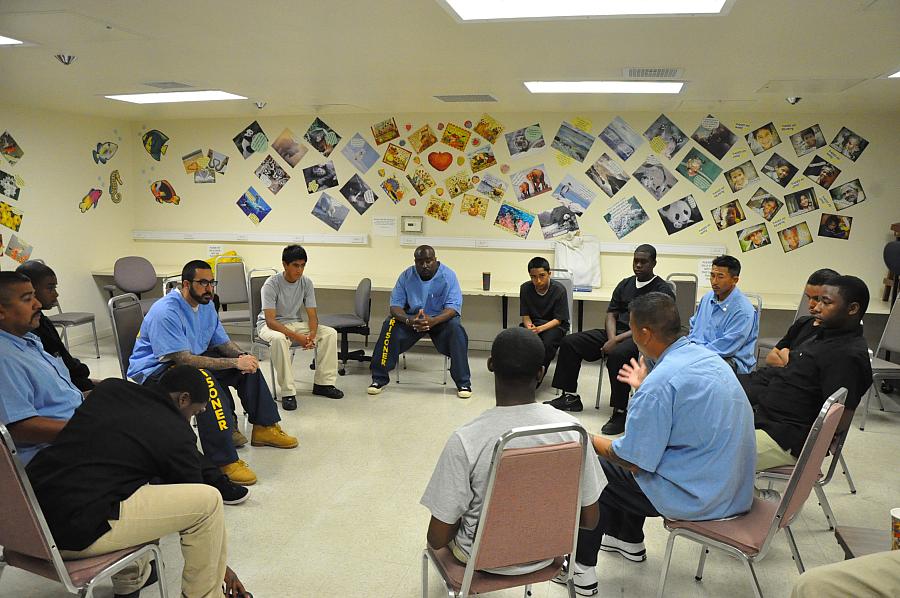Effort to enroll released inmates in Medicaid faces big hurdles

One of the ironies of the American health care system is that only the incarcerated are constitutionally guaranteed health care.
But an inmate’s exit from jail or prison often means an exit from the only health care system they have known. Those behind bars are more likely to suffer from chronic disease, addiction and mental illness. Without continued treatment, problems easily reemerge. In many cases, relapse is followed by a quick return to incarceration.
Ensuring care for inmates after release has long been a challenge. The Affordable Care Act could help. Starting January 1, the majority of the incarcerated qualify for Medicaid coverage thanks to changes in the program that now make single, childless adults eligible. Previously, between 70 and 90 percent of the 10 million individuals released each year in the U.S. were uninsured.
The Medicaid expansion has the potential to improve health outcomes, and in turn, recidivism rates. An estimated 65 percent of those booked into jail need substance abuse treatment, and two-thirds of inmates have a mental health problem. When care is discontinued upon release, these issues often resurface and lead to further run-ins with law enforcement. Continuing treatment, many experts say, could reduce the chances of former inmates returning to jail. The coverage expansion could also bode well for the budgets of public health and corrections systems that have cared for such individuals in either emergency rooms or behind bars.
But so far, the enrollment effort for inmates has been rife with challenges, from a lack of infrastructure to a lack of collaboration between health, corrections, and social services departments. In California, the task is especially difficult since prison realignment has increased jail populations in each of the state’s 58 counties. Many counties have yet to determine who will be in charge or how exactly they’ll sign up inmates for Medicaid coverage.
Other states such as Rhode Island and Connecticut are already experimenting with implementation, but they’ve had problems as well.
“Even the good models – they still had a lot of challenges,” said Christian Heiss, program officer with the Center for Health Care Strategies. In particular, he says transferring information from prisons and jails to the departments that manage Medicaid has been a problem.
Heiss has been running workshops for corrections and Medicaid officials for the past two years in conjunction with Community Oriented Correctional Health Services, an organization that builds relationships between jails and local health providers.
He recalls one particularly memorable meeting: “The Medicaid peoples’ jaws dropped when they found out that some jails and prisons don’t have Internet.”
The ability to connect to online health exchanges or electronically send applicant information for eligibility verification points to a disconnect between the justice and health systems, according to Heiss.
“Because prior to the ACA there was a prohibition to giving Medicaid to childless adults, there was really not much of an incentive for the conversation between the two organizations,” Heiss said.
According to David Cloud, senior program associate for the Vera Institute of Justice’s substance use and mental health program, closing the gap between corrections and health will require more than just coordination of IT and infrastructure. It’ll also take a philosophical shift in both systems. Said Cloud:
Part of the issue is trust. Health systems think that justice systems are just out to punish people and lock them up and throw away the key. And the justice system has thought that the health system is coddling criminals.
All agree that a Medicaid card alone is not enough to ensure inmates continue receiving care after release, nor does it guarantee that they will stay out of jail. Problems such as a lack of housing, transportation or steady employment all make it harder for ex-offenders to keep up with their care.
“To just give somebody insurance and not any kind of linkage into the community doesn’t work,” said Brenda Doyle, a clinical nursing director with the Los Angeles County Sheriff’s Department.
A couple weeks ago, the department opened the first-ever Community Reentry and Resource Center across the street from Men’s Central Jail in downtown Los Angeles. The goal of the center is to connect newly released individuals with services – transitional housing, food benefits, employment services, mental health counseling and drug rehabilitation – to help ease their re-entry into society.
Meanwhile, California lawmakers have increased mental health interventions before individuals land in jail. In April, the state approved $75 million in grants for crisis residential treatment programs and mobile support teams to aid law enforcement. And last week, legislators introduced a package of proposals to increase mental health training for law enforcement officers and to bolster re-entry programs for inmates with mental illnesses.
“Despite the fact that people are rapidly churning in and out of jails, inmates have been an afterthought in public health,” said Cloud of the Vera Institute. “What we invest in to protect our safety and public health are very much the same.”
Photo by San Quentin News via Flickr.

